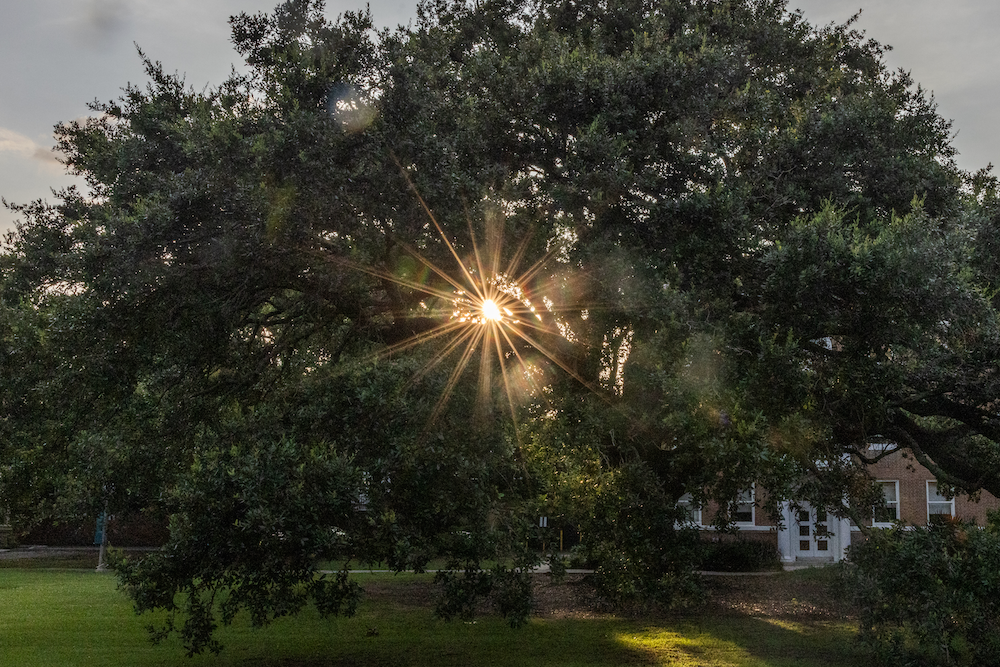Tulane bolsters storm preparedness with major upgrades to energy infrastructure and operations
As the 2025 hurricane season nears its peak, Tulane University stands among the nation’s most storm-resilient college campuses, thanks to major enhancements in backup energy systems and overall emergency preparedness.
While cities like Miami, Key West, Cape Hatteras and Tampa see more frequent hurricane activity, New Orleans has faced its share of powerful storms — and Tulane has responded with continual improvements to protect people and operations.
“Tulane University is well-prepared and experienced in navigating hurricane season,” said Patrick Norton, Tulane’s senior vice president, chief operating officer and treasurer. “We emphasize the importance of personal evacuation plans for all students, faculty and staff, and we’ve also fortified our infrastructure, especially in energy reliability and data protection.”
In a recent university-wide message, Tulane reiterated its requirement that all community members have personal evacuation plans in place. If instead of evacuation orders, a shelter-in-place is called for, critical buildings now benefit from upgraded backup power systems to maintain the safety of students and staff, support essential research and protect temperature-sensitive materials.
A key enhancement to hurricane preparedness is the addition of 16 megawatts of backup power capacity across both the uptown and downtown campuses. This significant boost allows Tulane to operate more effectively and safely during hurricanes or tropical storms.
Additionally, Tulane’s primary data center has been relocated to Ashburn, Virginia, to ensure uninterrupted access to vital university systems during severe weather events. The move enhances both the security and continuity of university operations.
These improvements are part of a long-term, 30-year partnership with ENFRA, a leading energy infrastructure firm. The collaboration is designed to strengthen campus operations in ways that prioritize the safety of students, faculty and staff and are both fiscally and environmentally sustainable.
Jeffrey Benjamin, Tulane’s vice president of facilities and campus development, said that while a lot of the improvements had been completed leading up to the 2024 hurricane season, bolstering the resiliency of campus is a continuous effort.
“We’re continuously working on the physical plants to make our campuses more resilient and safer for our community members in the event of severe weather,” Benjamin said. “Human safety is our No. 1 priority. Part of this means our power systems and other operations have to be redundant in case one level is knocked out, another can take its place. We also have ongoing preventive efforts that we do like cleaning stormwater drains and roof drains to make sure nothing is clogged. Those are the normal day-to-day things that we do."
Key developments include:
• Comprehensive backup power for most uptown campus buildings, provided either through dedicated in-building generators or full-building generator systems. Full-building generators supply power to the entire structure, including all systems and appliances, while standard generators may support only critical areas.
• Buildings equipped with full-building generators now include all residence halls, science and engineering facilities, the Student Health Center, the Howard-Tilton Memorial Library, the Reily Student Recreation Center, Weinmann Hall and the Goldring/Woldenberg Business Complex.
• Buildings with dedicated in-building generators include the Malkin Sacks Commons, the Lavin-Bernick Center for University Life, McAlister Auditorium and Dixon Hall.
• Added 1.3 megawatts of solar power array across the uptown campus.
• Downtown Campus Center (formerly Tulane Medical Center) has a series of nine diesel generators that supply critical power to the building.
• Building facades, including windows, have been sealed at the J. Bennett Johnston Health & Environmental Research Building and the Hutchinson Memorial Building to reduce the chances of water intrusion from wind-driven rain.
• Storm drains have been pumped out along LaSalle Street between Gravier and Cleveland streets, S. Liberty Street between Gravier Street and Tulane Avenue, and S. Saratoga Street between Tulane Avenue and Cleveland Street.

